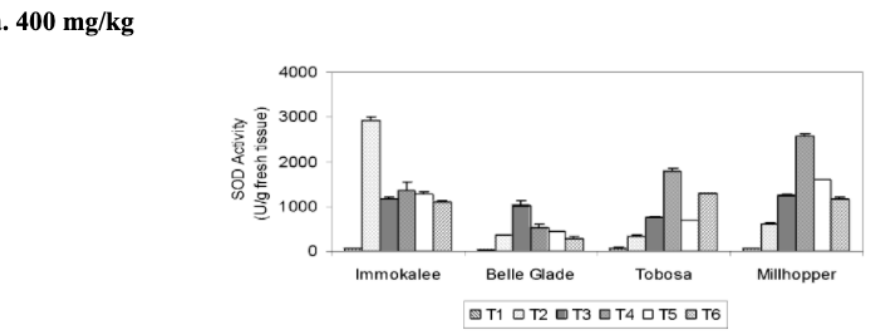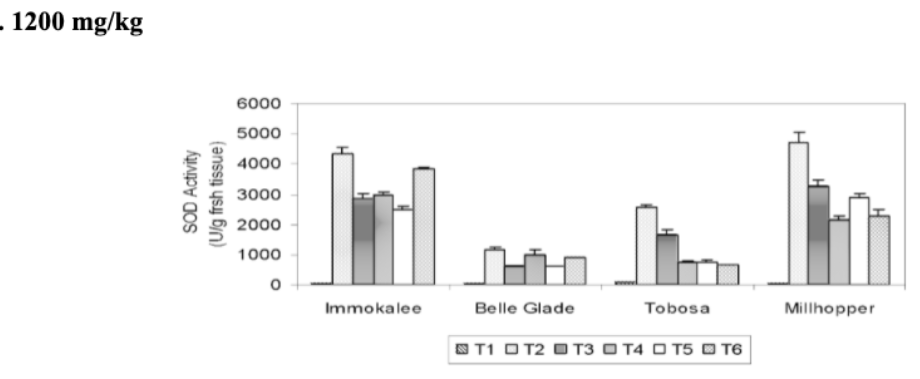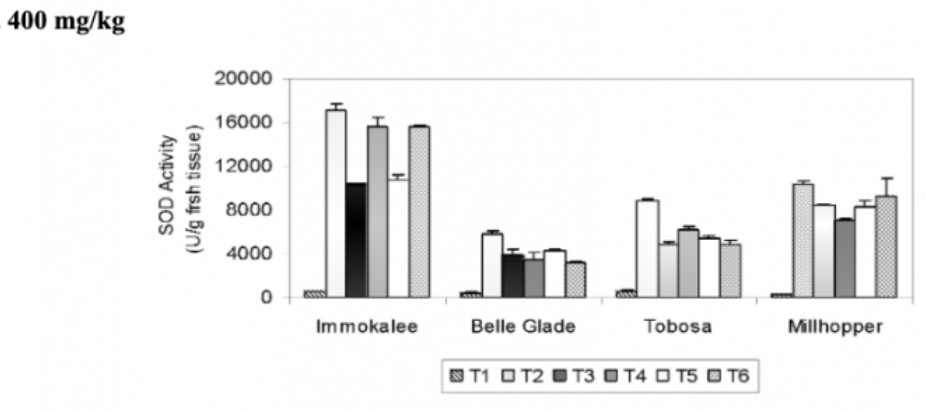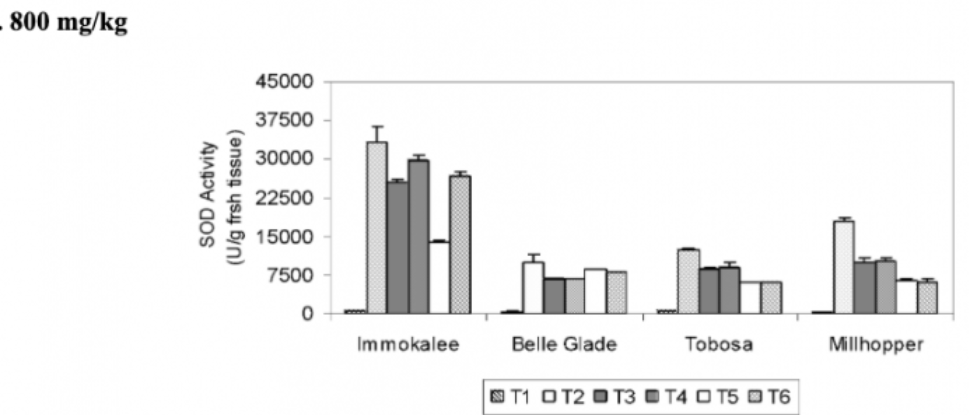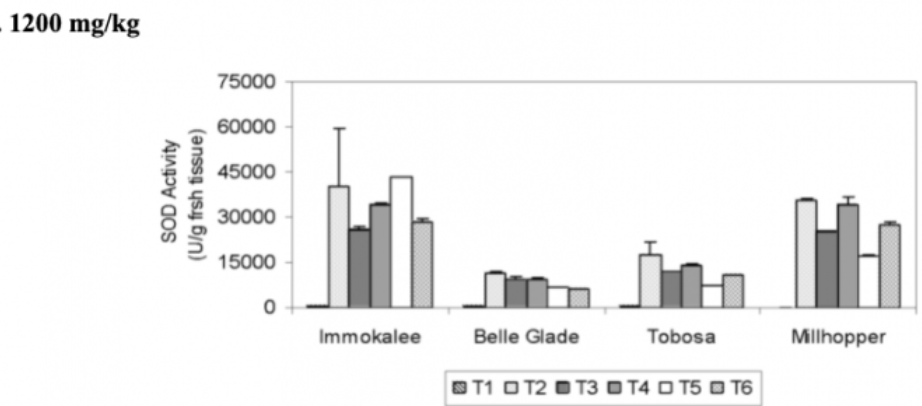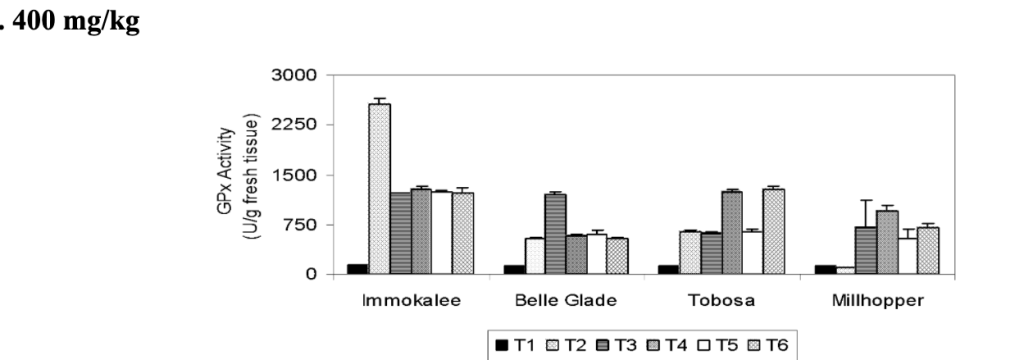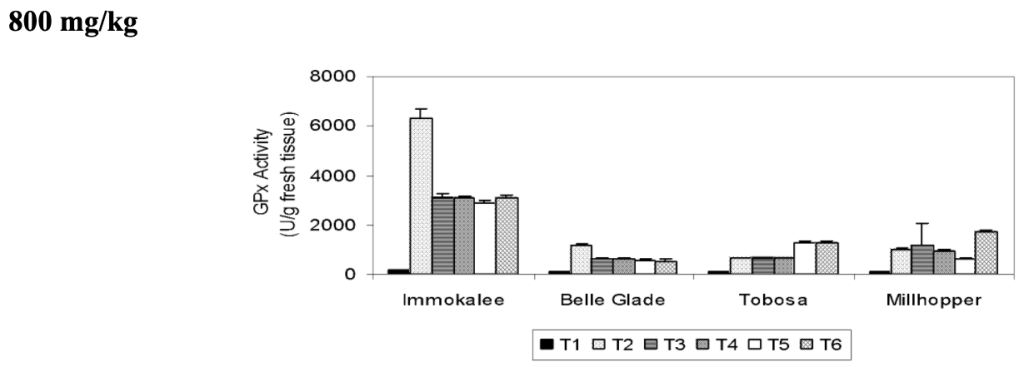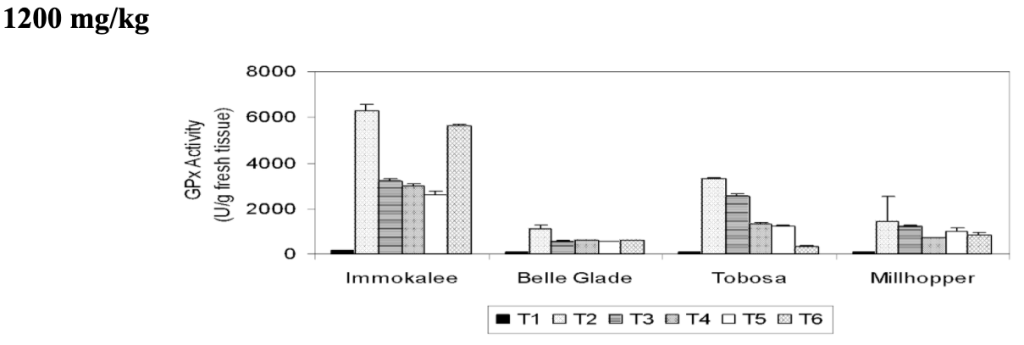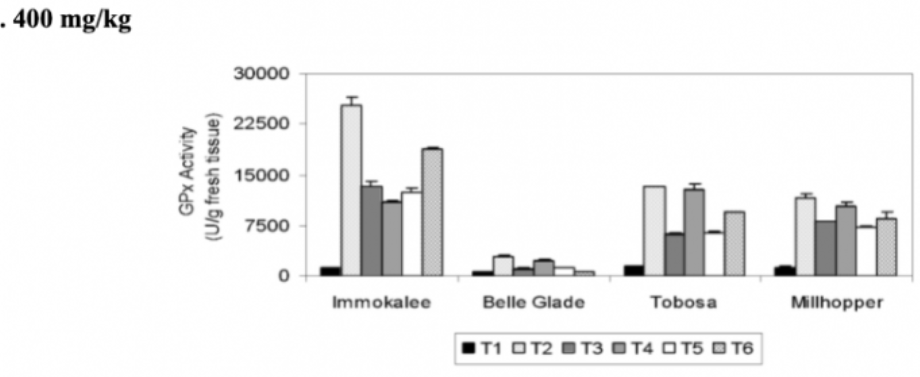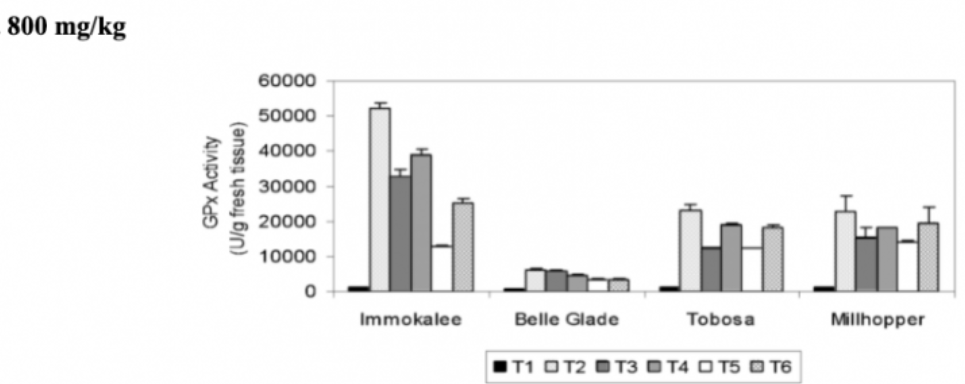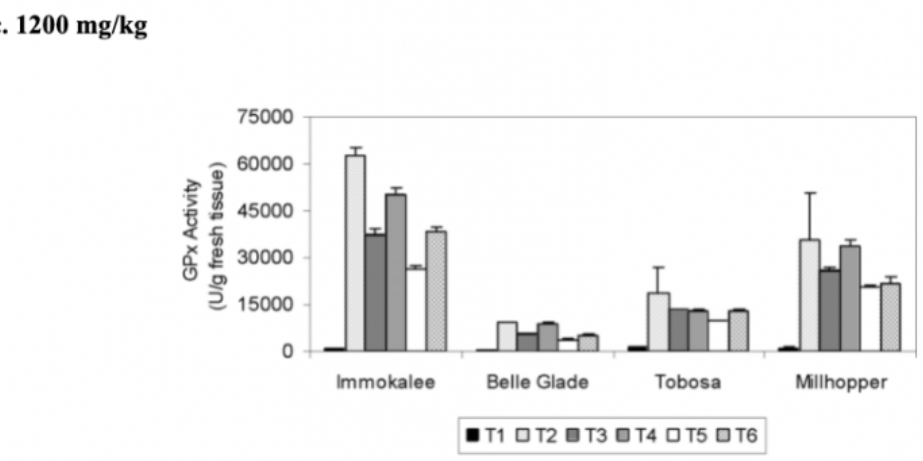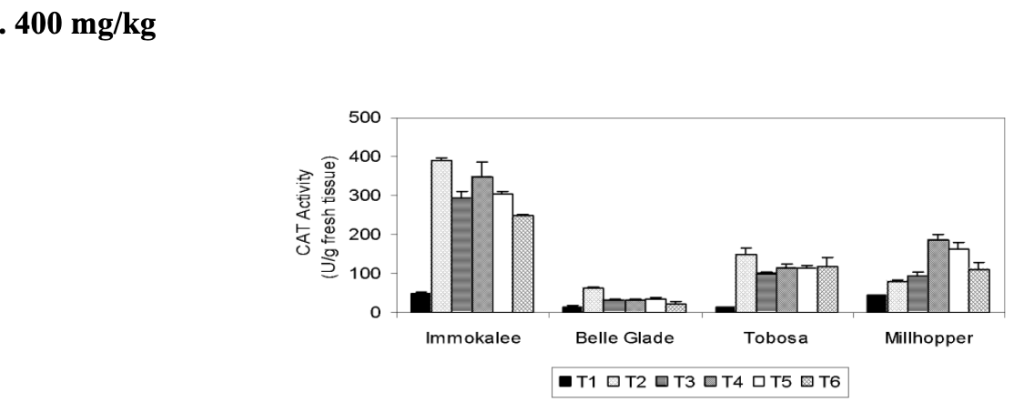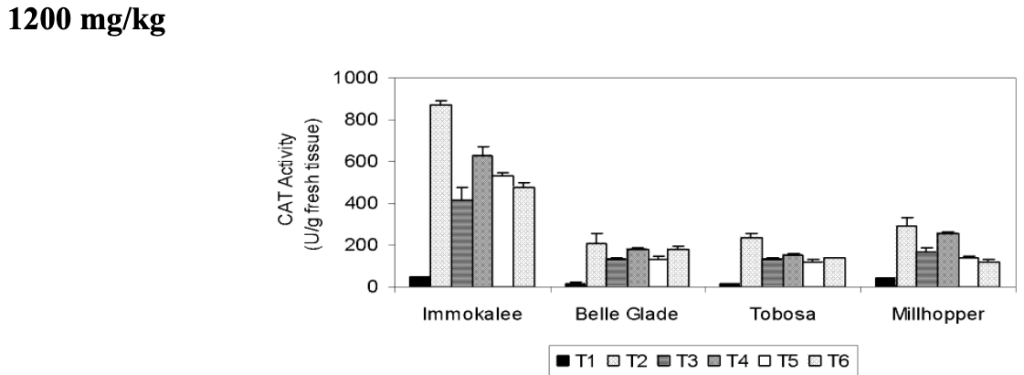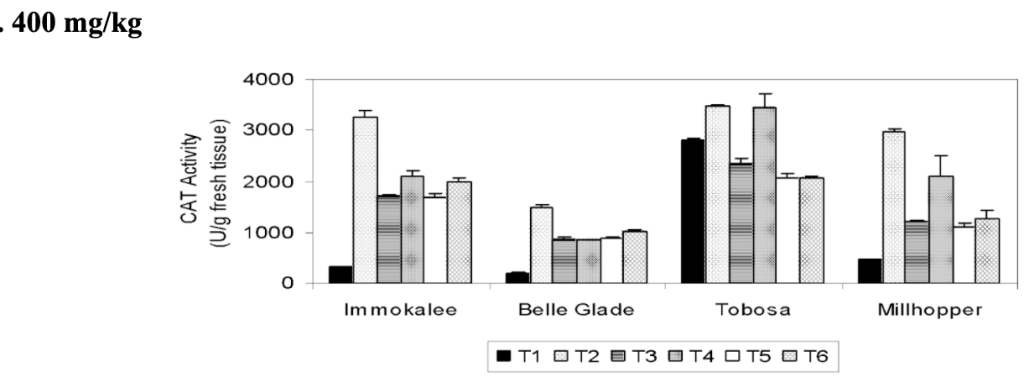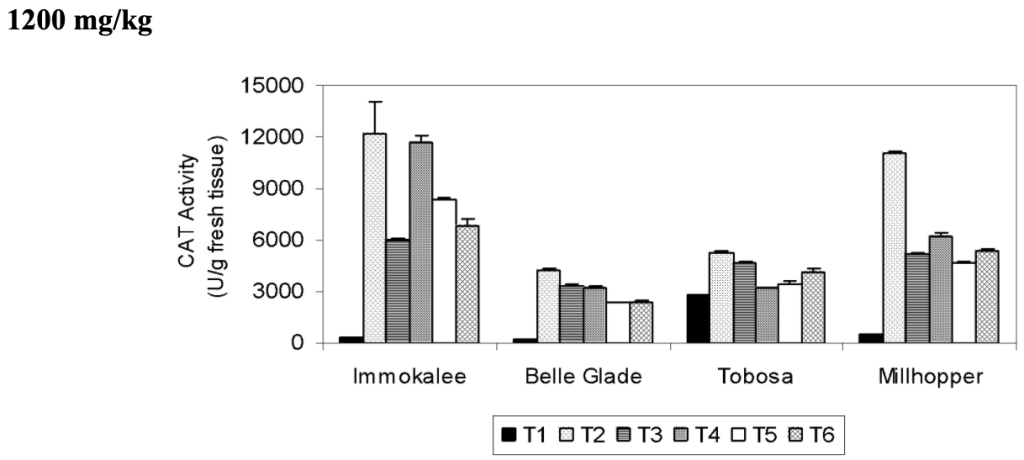Biochemical mechanisms are also used to suppress the phytotoxic effects of heavy metals. A common mechanism is phytochelatins (PC) which are made up of three amino acids and release thiol peptides. These peptides are synthesized from glutathione or the reaction by phytochelatin synthase. PC helps in heavy metal toxicity by creating a complex with metals due to their high cysteine content. These metal – PC complexes are then transported to the vacuole, stored, and separated from cell metabolism. The purpose of this study was to identify possible explanations for vetiver’s high lead tolerance by studying the PC and PC-Pb complexes in the roots and the shoots to vetiver grass (Andra et al. 2009).
Vetiver grass was grown in a hydroponic system for 30 days. At 30 days, mark lead nitrate was spiked at concentrations of 0,400 and 1200 mg Pb L-1. After 7 days, root and shoot samples were collected. HPLC-ES-MS determined PC and PC-Pb complexes (Datta, Sarkar, and Andra. 2007).
The result shows a confirmation for 4 PC complexes. PC-1 m/z of 179/308, PC-2 m/z of 411/539, PC-3 m/z of 643/773, and PC-4 m/z of 875/1005 of which are bound to lead. This data illustrates the possible mechanism for vetiver’s high lead tolerance (Datta, Sarkar, and Andra. 2007).
Vetiver grass can tolerate metal toxicity by minimizing translocation from the roots to the shoots, releasing antioxidant enzymes and genetics. Superoxide dismutase, catalase, and glutathione peroxidase antioxidant enzyme activities were analyzed in the 4 soils.
Overall increasing lead concentrations increased enzyme activity. Immokalee soils had the highest enzyme activity, followed by Millhppper, Tobosa, and Belle Glade. Enzyme activity for all 4 soil types was higher in the root compared to the shoots (Datta, Sarkar, and Andra. 2007).
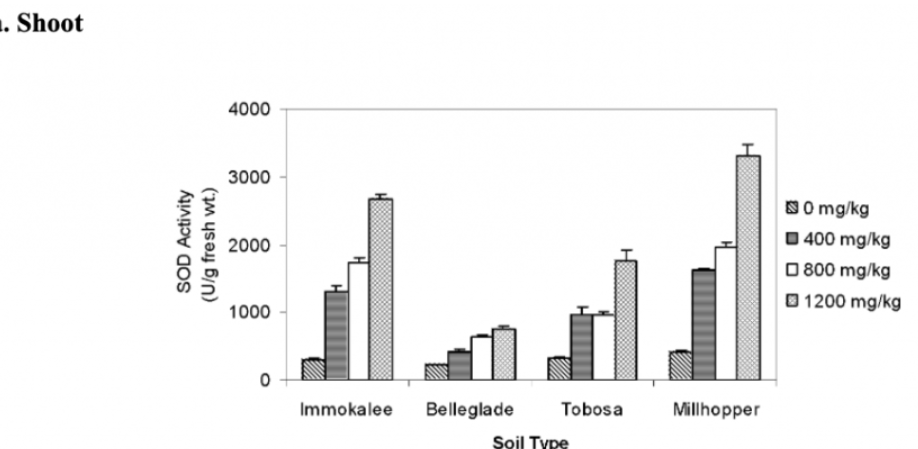
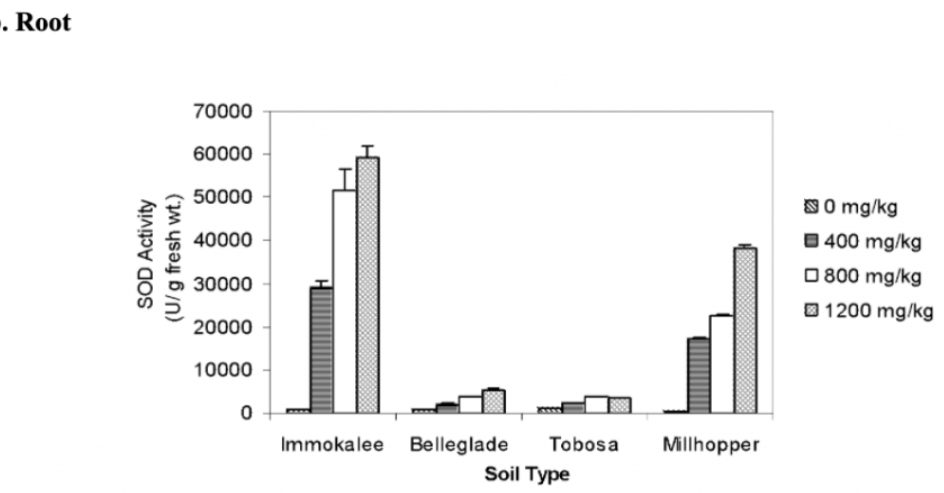
Superoxide dismutase (SOD) activity in shoot and root tissues of vetiver grass grown in various soils amended with different concentrations of lead
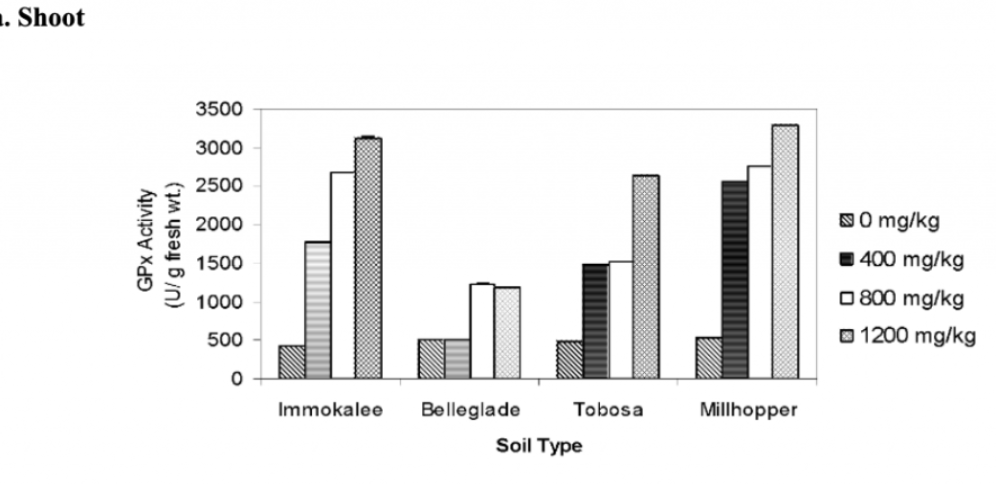
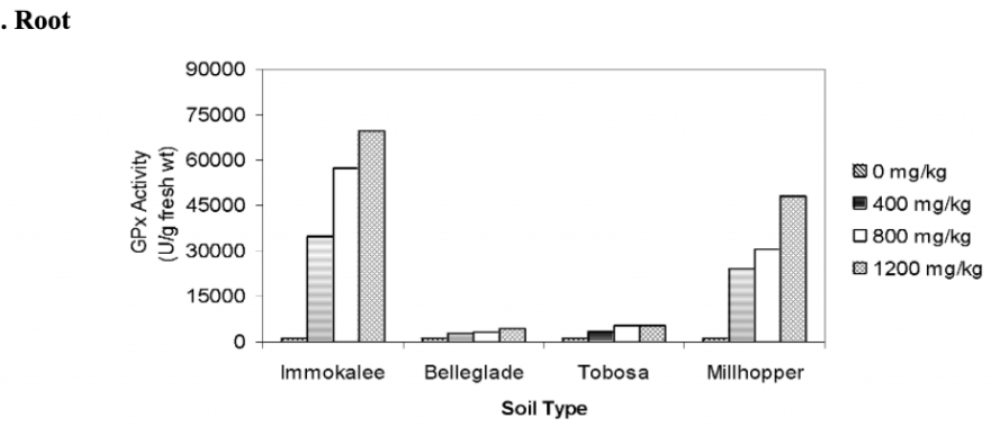
Glutathione peroxidase (GPx) activity in shoot and root tissues of vetiver grass grown in various soils amended with different concentrations of lead
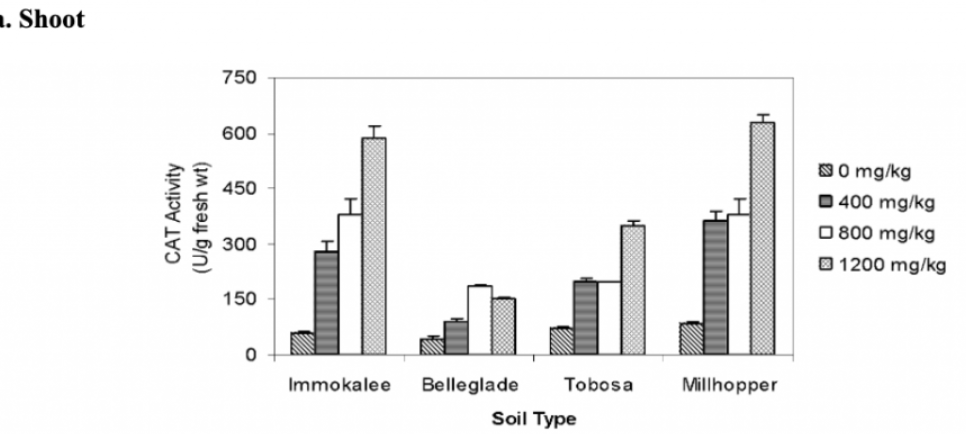
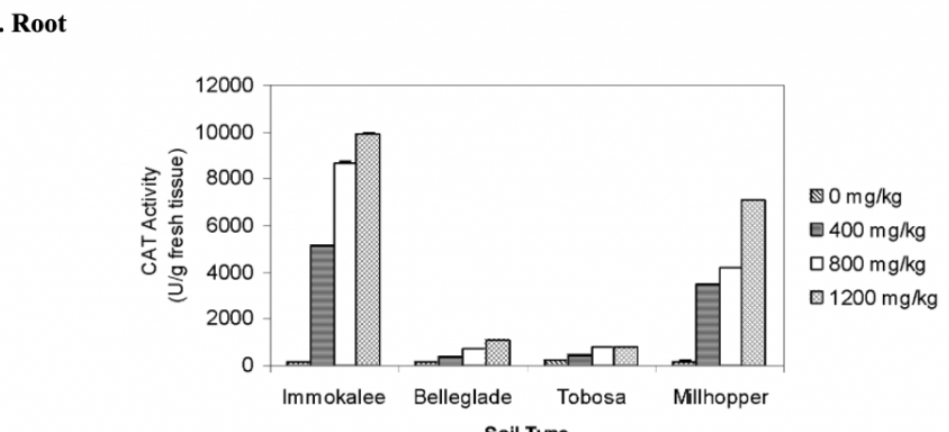
Catalase (CaT) activity in shoot and root tissues of vetiver grass grown in various soils amended with different concentrations of lead
Enzyme activity was also analyzed 10 days after added EDTA and EDDS amendments. Enzyme activity was higher in plants with lead with no chelating agents than lead with cheating agents. Overall the results suggest that chelating agents mask the toxicity effects of the lead stress, which resulted in an activity decrease of these antioxidant enzymes. EDTA had a higher elevated enzyme activity compared to EDDS. Overall the roots had a higher enzyme activity than the shoots for all enzymes(Datta, Sarkar, and Andra. 2007).
Superoxide dismutase (SOD) activity in the shoots of vetiver grass grown in various soils amended with different concentrations of lead at 400 mg/kg, 800 mg/kg, and 1200 mg/kg. (T1-No Pb or chelate; T2-Pb + no chelate; T3-Pb + 10 mM/kg EDTA; T4-Pb + 15 mM/kg EDTA; T4-Pb + 10 mM/kg EDDS; T5-Pb + 15 mM/kg EDDS
Superoxide dismutase (SOD) activity in the roots of vetiver grass grown in various soils amended with different concentrations of lead at 400 mg/kg, 800 mg/kg, and 1200 mg/kg. (T1-No Pb or chelate; T2-Pb + no chelate; T3-Pb + 10 mM/kg EDTA; T4-Pb + 15 mM/kg EDTA; T4-Pb + 10 mM/kg EDDS; T5-Pb + 15 mM/kg EDDS
Glutathione peroxidase (GPx) activity (±SE) in the shoots of vetiver grass grown in various soils amended with different concentrations of Pb (a) 400 mg/kg (b) 800 mg/kg and (c) 1200 mg/kg. (T1-No Pb or chelate; T2-Pb + no chelate; T3-Pb + 10 mM/kg EDTA; T4- Pb + 15 mM/kg EDTA; T4-Pb +10 mM/kg EDDS; T5- Pb +15 mM/kg EDDS).
Glutathione peroxidase (GPx) activity (±SE) in the roots of vetiver grass grown in various soils amended with different concentrations of Pb (a) 400 mg/kg (b) 800 mg/kg and (c) 1200 mg/kg. (T1-No Pb or chelate; T2-Pb + no chelate; T3-Pb + 10 mM/kg EDTA; T4- Pb + 15 mM/kg EDTA; T4-Pb +10 mM/kg EDDS; T5- Pb +15 mM/kg EDDS).#
Catalse (CAT) activity (±SE) in the shoot of vetiver grass grown in various soils amended with different concentrations of Pb (a) 400 mg/kg (b) 800 mg/kg and (c) 1200 mg/kg. (T1-No Pb or chelate; T2-Pb + no chelate; T3-Pb + 10 mM/kg EDTA; T4- Pb + 15 mM/kg EDTA; T4-Pb +10 mM/kg EDDS; T5- Pb +15 mM/kg EDDS).
Catalse (CAT) activity (±SE) in the root of vetiver grass grown in various soils amended with different concentrations of Pb (a) 400 mg/kg (b) 800 mg/kg and (c) 1200 mg/kg. (T1-No Pb or chelate; T2-Pb + no chelate; T3-Pb + 10 mM/kg EDTA; T4- Pb + 15 mM/kg EDTA; T4-Pb +10 mM/kg EDDS; T5- Pb +15 mM/kg EDDS).
Andra, S., R. Datta, D. Sarkar, S. Saminathan, C. Mullens, and S. Bach. 2009. Analysis of phytochelatin complexes in the lead tolerant vetiver grass (Vetiveria zizaniodies (L.)) using liquid chromatography and mass spectroscopy. Environmental Pollution. 1-11
